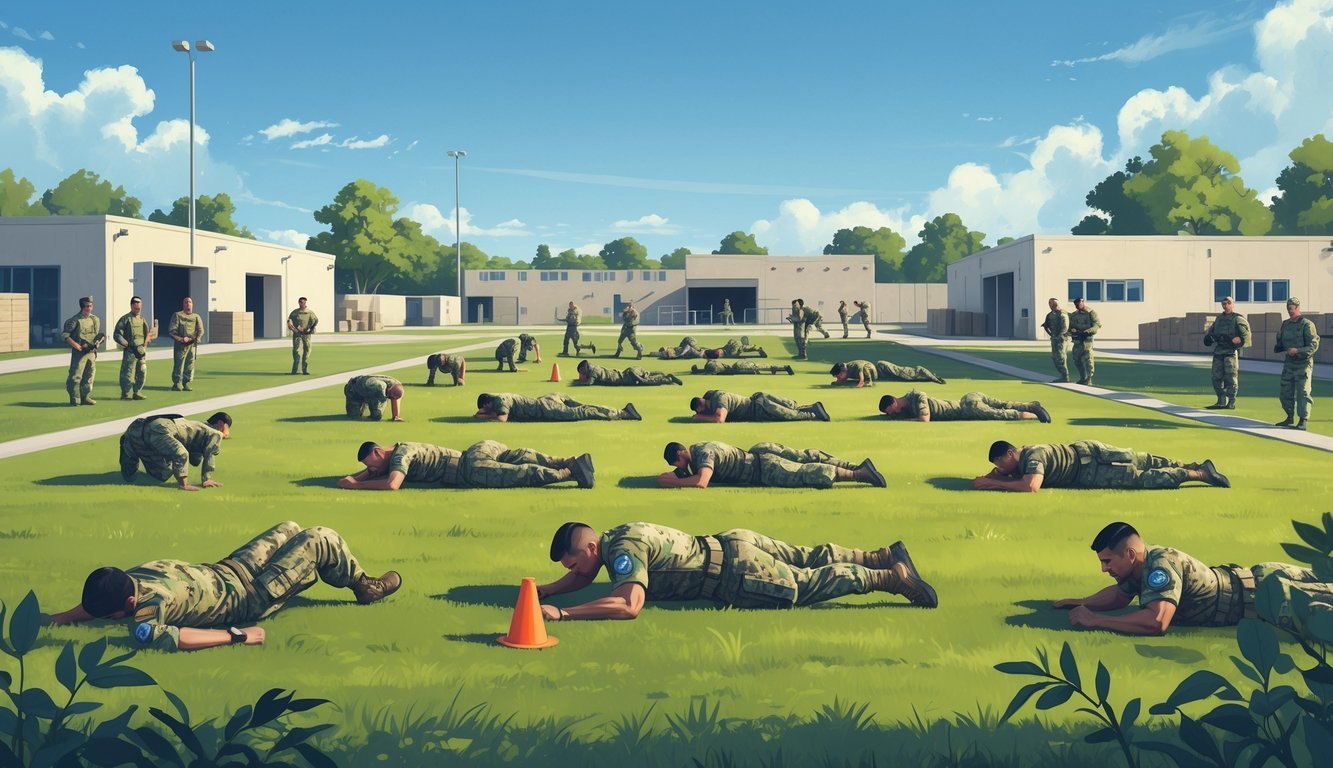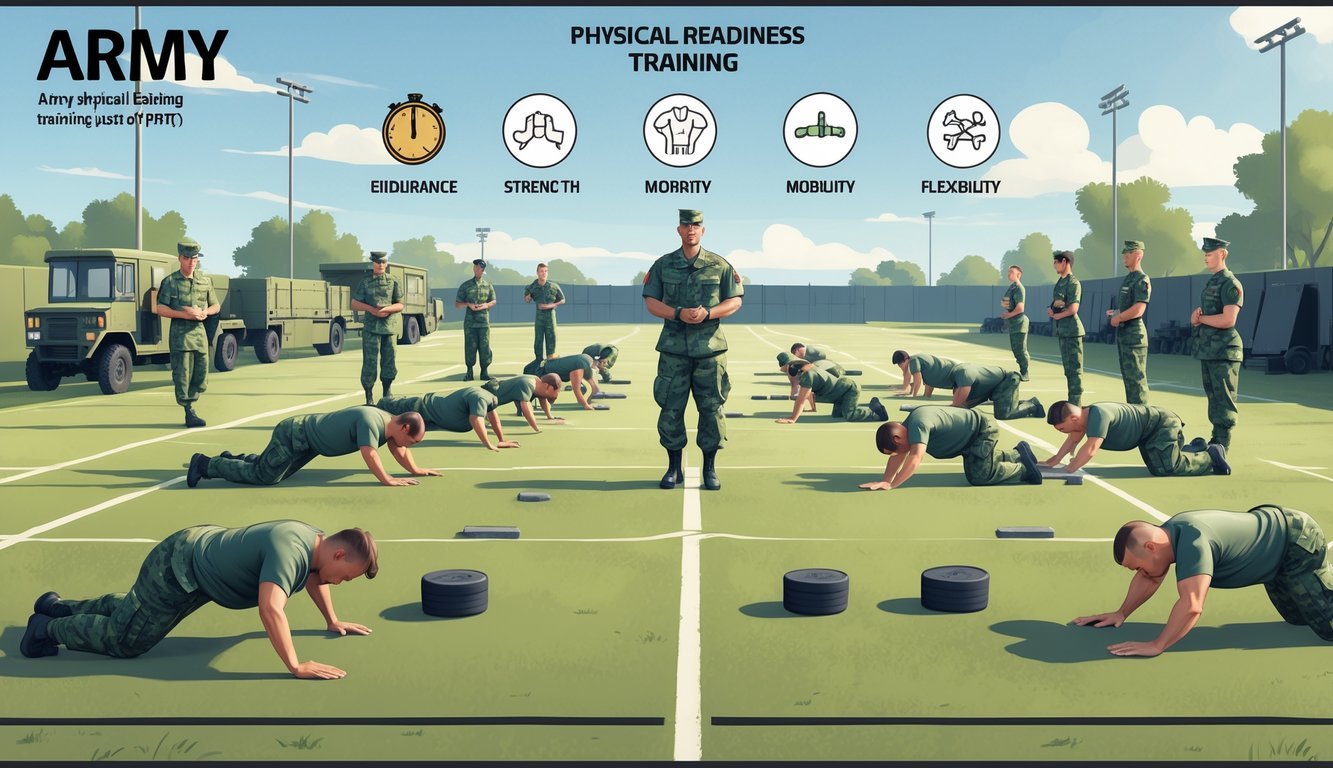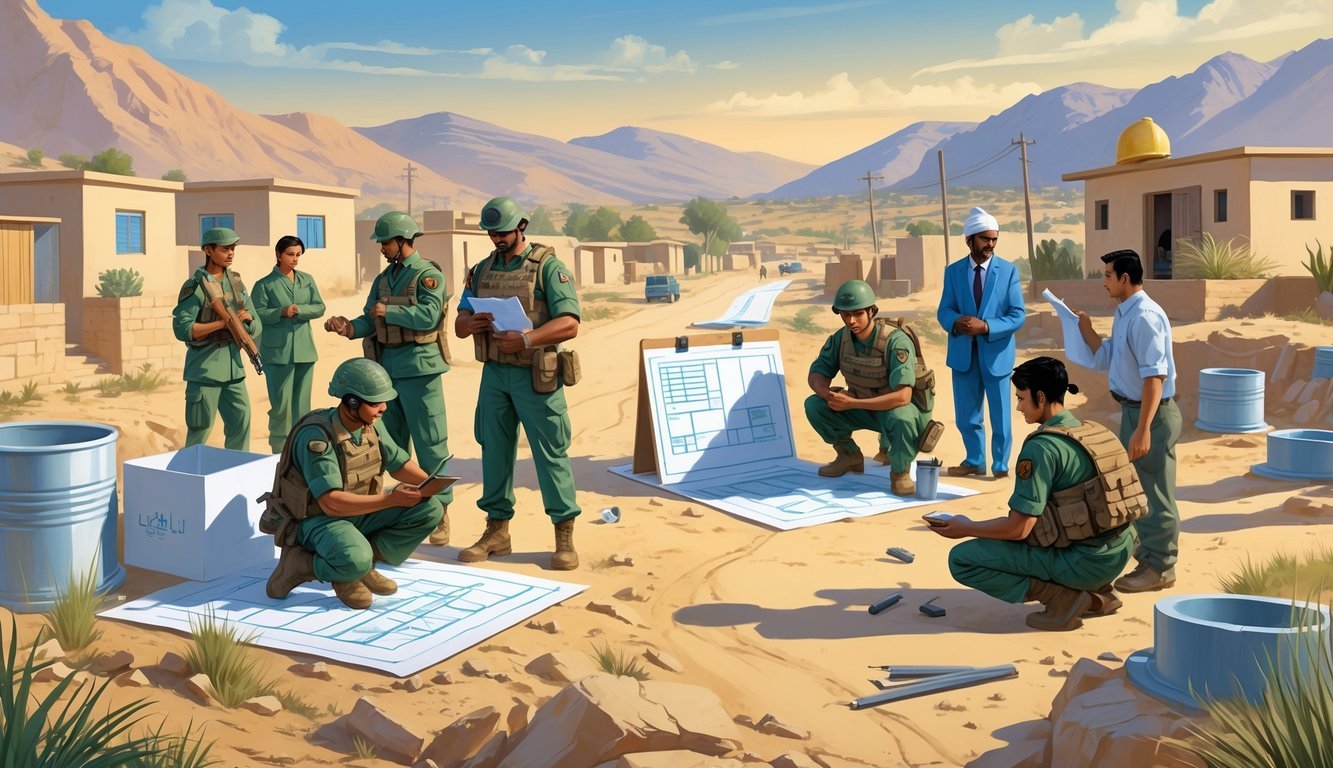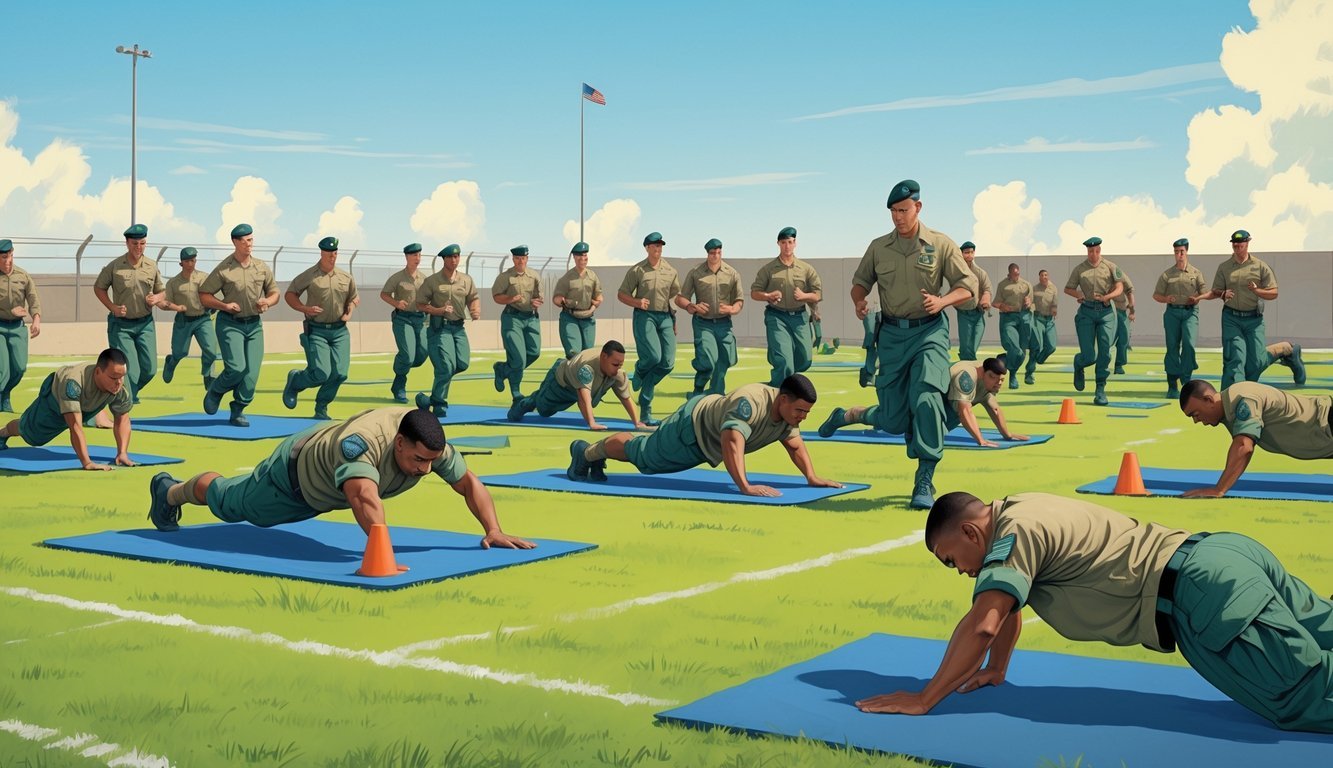PsychNewsDaily Publishers
100 Summit Drive
Burlington, MA, 01803
Telephone: (320) 349-2484
PsychNewsDaily Publishers
100 Summit Drive
Burlington, MA, 01803
Telephone: (320) 349-2484
Army Physical Readiness Training (PRT) enhances soldiers' strength, endurance, and mobility through structured phases and drills, ensuring readiness for combat and daily military tasks.

Army Physical Readiness Training (PRT) keeps soldiers strong, fit, and ready for just about anything. It builds strength, endurance, and mobility through drills that mimic real-life missions. This training isn’t just for passing tests—it’s about actually preparing your body to handle tough situations out in the field.
Once you join the Army, physical fitness becomes a part of your routine. The PRT exercises feel realistic and effective, helping you get better where it matters most.
If you know what PRT involves, you’ll have an easier time staying on track and meeting the standards every soldier faces.

Army Physical Readiness Training (PRT) helps you build the strength, endurance, and skills you’ll need for combat and daily missions. The program breaks training into clear phases, uses specific drills, and relies on strong leadership to get you physically ready for service demands.
Physical Readiness Training, or PRT, is the Army’s way of getting you ready for the physical demands of military life. It focuses on improving your strength, stamina, mobility, and agility.
You’ll do exercises like running, muscular strength drills, and movement skills. These keep you fit for combat and help you succeed in missions.
PRT also tries to cut down on injuries by sticking to routines that are challenging but safe.
You’ll run into PRT during Initial Military Training and Advanced Individual Training. The Department of Defense and the U.S. Army set up these sessions for all skill levels, from brand new recruits to seasoned soldiers.
Army PRT splits into three main phases to help you progress:
| Phase | Focus | Description |
|---|---|---|
| Toughening | Build basic strength and endurance | Gets you ready for tougher physical challenges |
| Sustaining | Maintain and improve fitness levels | Keeps your fitness steady while you handle other duties |
| Reconditioning | Recover from injury or inactivity | Brings you back to mission-ready shape |
Each phase uses targeted drills and gradual progression to boost your physical ability. The training mixes endurance, strength, and mobility exercises to match what you’ll face in the field.
Your leaders and drill sergeants shape how effective Army PRT is. They plan, guide, and supervise each workout.
They make sure training stays realistic, safe, and fits the mission needs.
The U.S. Army Training and Doctrine Command sets the guidelines. Leaders follow these rules to manage intensity and adjust exercises for your skill level.
They track your progress and give feedback. Building a team that’s physically ready and mentally tough is a big part of their job.
Your progress in PRT says a lot about good leadership—and your own commitment to the Army’s fitness standards.

Army Physical Readiness Training (PRT) focuses on specific exercises, testing standards, and safety practices to help you build and keep your strength, stamina, and mobility. The training covers preparation drills, assessments like the Army Combat Fitness Test, and recovery methods to lower injury risk and boost performance.
Army PRT uses a mix of dynamic exercises to improve your functional strength and mobility. Before you dive in, the Preparation Drill gets your body warmed up using moves like the bend and reach, rear lunge, high jumper, and squat bender.
This warm-up raises your heart rate and wakes up your muscles for tougher activity.
Main exercises include prone rows, windmills, forward lunges, and bent-leg body twists. These hit several muscle groups and focus on core strength and flexibility.
PRT ramps up in difficulty as you go, adapting to your age, gender, and fitness level.
The format uses cadence to keep everyone in rhythm and on point. You might use simple equipment or just your body weight, and train in a gym or out in the open. PRT fits easily into daily routines.
You’ll check your progress with tests like the Army Physical Fitness Test (APFT) or the newer Army Combat Fitness Test (ACFT). These include things like push-ups, leg tucks, and timed runs to measure your strength, stamina, and endurance.
Each test sets clear standards based on age and gender. Meeting—or beating—these standards is a must for military readiness.
Scores show you where you need to get better.
Regular testing helps track your progress over time. Using good form during tests helps you avoid injury and keeps the results legit.
Army PRT puts a big focus on injury prevention. You always start with a warm-up to loosen up, then use the right form to protect your knees and shoulders.
Recovery drills—like slow stretching and easy movements—help cut down on soreness.
Trainers use the Composite Risk Management Process to spot risks and tweak exercises as needed. If you feel pain or fatigue, that’s a sign to slow down or stop.
Eating well also helps your body recover and lowers injury risk. Rest gives your muscles time to heal and keeps you from overtraining.
Always pay attention to how you feel and use safe gear and facilities to stay injury-free during PRT.

Wondering what exercises are in the training? Or where to find guides and official manuals? Maybe you’re curious about current standards or how preparation drills usually start. Here’s what you need to know.
The exercises focus on building strength, endurance, and agility. You’ll see push-ups, sit-ups, running, and movement drills that boost overall fitness.
Detailed guides are available in official Army resources like FM 7-22. Local recruiting offices and military websites usually have these materials, too.
The main manual is FM 7-22, which covers everything about Physical Readiness Training. You can find it online through Army publications or ask your unit or recruiter for a copy.
Standards depend on age, gender, and military occupational specialty. They lay out requirements for push-ups, sit-ups, and a timed run, and the Army updates them regularly to keep soldiers sharp.
Preparation drills kick off with warm-up moves focused on mobility and light stretching. These get your body ready and help prevent injuries before the main workout.
The new manual, FM 7-22, puts a bigger emphasis on holistic health and fitness. It covers injury prevention and mental readiness.
You’ll also find more varied training plans. The older manuals mostly stuck to physical exercise routines, so this feels like a real shift in approach.